Hi, beautiful/handsome! ? Today, we dive into the delicious world of protein-packed vegan snacks, spotlighting two timeless treasures: Ulundu Vadei and Parupu Vadei. These savory delights, known as vadais, are more than just snacks; they are an experience. Vadais hold a special place in South Asian cuisine with their perfectly crisp exterior and soft, fluffy interior bursting with flavors of lentils and aromatic spices. ?✨ Join us as we celebrate the charm and versatility of Ulundu Vadei and Parupu Vadei—must-try vegan snacks for every occasion! ??️
In my previous posts, we’ve enjoyed a variety of mouthwatering recipes, from the fragrant Islamic Biryani ? to the irresistible Cheesy Paneer ?, all available at the end of this blog. Now, get ready to embark on a flavorful journey into the delightful world of Vadeis ??.
Please follow the link to the recipes ➡️:
Ulundu Vadei: https://www.youtube.com/shorts/BbqlrJfdcw0
Parupu Vadei: https://www.youtube.com/shorts/LbCz1pXGoUQ
The Tale of Vadai: A Savory Fairy Tale ??♀️
Once upon a time, in the vibrant lands of ancient South India, there lived a community deeply rooted in culinary traditions. Among their many culinary delights, one savory snack stood out – the Vadai. Legend whispers of its ancient roots, cherished by the Tamil people over 2,000 years ago. ? This lesser-known fact enriches the Vadai’s narrative, accentuating its timeless appeal and cultural significance across the ages.
In those ancient kitchens, green beans were meticulously soaked, de-skinned, and ground to a smooth paste. This paste was then shaped into delightful balls and lovingly deep-fried to perfection. ? The Vadai’s journey didn’t stop within the boundaries of South India. It traveled afar, carried by the waves of migration and the winds of trade. ?
In the mid-19th century, immigrants from regions like Uttar Pradesh and Bihar embarked on journeys across the seas, seeking new opportunities in distant lands like Trinidad and Tobago, Guyana, Suriname, and beyond. Among their cherished culinary treasures was the Vadai, known locally as bara. ?
Today, whether in South India’s streets or Trinidad’s markets, Vadai still tells its delicious tale, echoing its rich history and enduring legacy as a beloved savory snack. ?
Ulundu Vadai for Thai Pongal ? and Karthigai Deepam ?
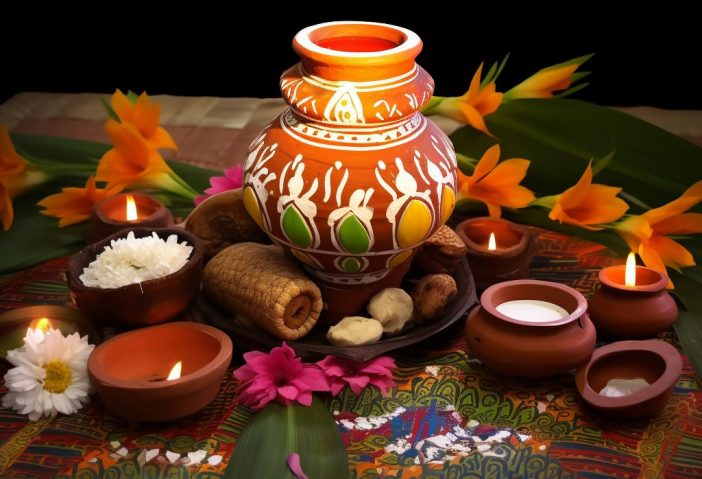
Thai Pongal ?
Thai Pongal is a cherished harvest festival that pulsates with the essence of Tamil culture. This multi-day festival, adored by Tamils worldwide and deeply entrenched in Tamil Nadu’s soul, is a jubilant homage to nature’s generosity and the Sun God Surya’s benevolence. ?
Thai Pongal, blending the Tamil words “Thai” for the month of Thai (January-February) and “Pongal,” signifying abundance and overflow, heralds the sun’s northward journey (Uttarayana). As the winter solstice fades, Thai Pongal ushers in hope and prosperity with the year’s first harvest. ?
At its core, Thai Pongal resonates with gratitude. It’s a sacred moment to thank nature, the nurturing Sun God, and the diligent farm animals, particularly the cow, for their part in the abundant harvest. The making of the sweet Pongal dish, with rice, jaggery, milk, and fragrant spices, along with ulundu vadai, becomes a joyous ritual, infusing homes with warmth and aroma. ?
In essence, Thai Pongal weaves a vibrant tapestry of tradition, gratitude, and community spirit. As Tamils unite to celebrate the sun, nature’s bounty, and the ties that bind, Thai Pongal stands as a testament to Tamil culture’s enduring legacy and timeless values.
Karthigai Deepam ?
Karthigai Deepam is an ancient Hindu festival celebrated predominantly in Tamil Nadu and other parts of South India. Derived from the Tamil words “Karthigai” and “Deepam,” signifying the Tamil month of Karthigai (November-December) and the lighting of lamps, respectively, the festival holds profound cultural and spiritual significance.
This auspicious occasion commemorates the cosmic dance of Lord Shiva as the infinite cosmic pillar of fire, resolving the supremacy debate between Lord Vishnu and Lord Brahma. Additionally, it marks the birth of Lord Murugan/Kartikeya, son of Lord Shiva, raised by the six divine Krittika stars. ?
The festival is celebrated with great fervor, with rituals including lighting rows of ghee lamps, decorating homes and temples with lights, taking holy dips in rivers, fasting, performing pujas, and making kolam designs. Notably, in Tiruvannamalai, a massive lamp with 1,008 wicks is lit on the Annamalaiyar Hills, symbolizing Lord Shiva’s cosmic dance. ?
During these festivities, traditional delicacies like Ulundu Vadai and Rava Sweet Paniyaram are enjoyed, adding to the joy and merriment of the celebrations. These savory and sweet treats are cherished by families and communities as they come together to observe the sacred occasion of Karthigai Deepam. ?
Paruppu Vadai for Weddings and Thottil Ceremony ????
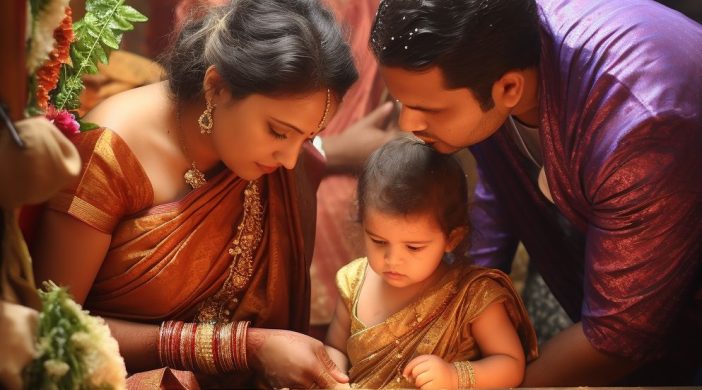
Weddings ??♀️??
Paruppu Vadai, also known as Aama Vadai or Chana Dal Vadai, holds cultural significance in Tamil Hindu culture, particularly during weddings and festivals. It is made from chana dal and is a must-have snack item served during auspicious occasions like weddings, house-warming ceremonies, and festivals such as Boghi, Tamil New Year, and Karthigai Deepam ?. While Paruppu Vadai is preferred for weddings, Ulundu Vadai (Medu Vadai) is reserved for festivals like Varalakshmi Nombu and Pongal. This savory snack’s preparation and serving are deeply embedded in Tamil culinary traditions, enriching the celebratory spirit of these events.
Thottil Ceremony ??
The Thottil ceremony, a cherished tradition in Tamil Hindu culture, celebrates newborns’ transition to independence and marks their introduction to the world. Typically performed between on the 30th after birth, this ritual involves placing the baby in a decorated cradle, chanting prayers for their well-being, and seeking divine blessings ??. With close relatives in attendance, the ceremony symbolizes the community’s cultural heritage and invokes auspicious beginnings for the child’s life journey. Additionally, it often coincides with the naming ceremony, where the newborn is formally given their name, further signifying their place in the family and society.
A brief comparison between Ulundu Vadai and Paruppu Vadai ??

Ulundu Vadei Recipe
Follow along with my video on how to make Ulundu Vadei!
? Prep Time: 120 min | ??? Cook Time: 15 min | ⏱️ Total Time: 125 min |?Servings: 3-4
? Ingredients:
- 500 g urid dal
- 4 green chili
- 2 onions
- Salt and curry leaves
For the Chutney:
- 100 g grated coconut
- 1/2 onion
- 2 dry red chili
- Salt, lemon juice
? Instructions:
- Begin by washing the urad dal thoroughly, repeating the process 2-3 times. ?
- Next, soak the urad dal in water for approximately 6 hours.
- After soaking, rinse the urad dal again and drain all the water. Transfer it to a grinder and add water, grinding the dal until it forms a solid paste, repeating the process 3-4 times. ?
- To ensure the paste is ready, perform a float test by placing a small amount of it in water; it should float. If it doesn’t, continue grinding until it does. ?️♂️
- If not using immediately, store the ground mixture in the refrigerator.
- When you’re ready to fry, add salt, chopped curry leaves, onions, and green chili to the paste for added flavor and crispiness. ???️
- Divide the mixture into 12-13 equal-sized balls. Meanwhile, heat oil in a kadai for deep frying over medium heat. ?
- Shape each ball into small patties, ensuring they’re slightly less than ½ inch thick.
- Deep fry the patties in medium-high heat until they turn golden brown on both sides. Avoid overcrowding the pan; leave enough space for even cooking.
- To prepare the chutney, place the grated coconut, onion, red chili, salt, and lemon juice into a blender. Blend the ingredients until smooth and well-mixed. Your sambal/chutney is now ready to serve. ??️?
- Serve the vadai with the chutney immediately for a perfect tea-time snack. ?️
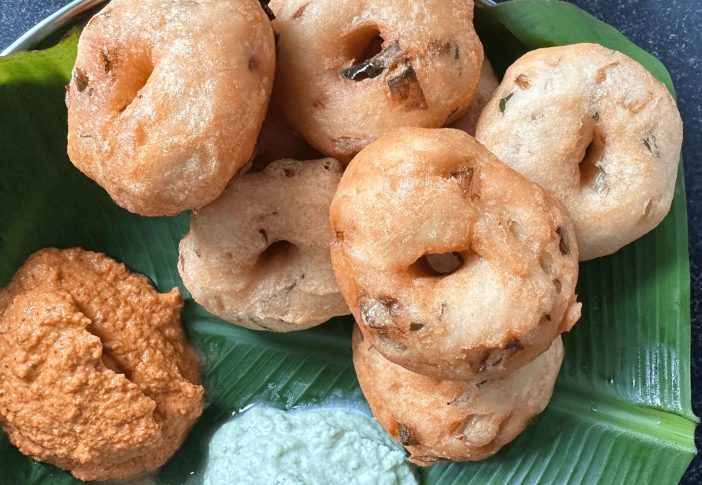
Paruppu Vadei Recipe
Follow along with my video on how to make Paruppu Vadei!
? Prep Time: 120 min | ??? Cook Time: 20 min | ⏱️ Total Time: 140 min |?Servings: 3-4
? Ingredients:
- 500 g thuvaram paruppu (toor dhal)
- 5 tablesppon cumin seeds
- 2 green chili
- 2 dry red chili
- 2 onions
- Salt, pepper and curry leaves
? Instructions:
- Start by thoroughly washing the toor dal, repeating the process 2-3 times. ?
- Then, soak the toor dal in water for about 6 hours.
- After soaking, rinse the dal again and drain all the water. Transfer it to a grinder and add water, grinding until it forms a solid paste, repeating 3-4 times. It’s okay if a few lentils remain whole. ?
- If not using immediately, store the ground mixture in the refrigerator.
- When ready to fry, add salt, chopped curry leaves, onions, and green chili to the paste for added flavor and crispiness.
- Divide the mixture into 12-13 equal-sized balls. Meanwhile, heat oil in a kadai for deep frying over medium heat. ?
- Shape each ball into small patties, ensuring they’re slightly less than ½ inch thick. ?
- Deep fry the patties in medium-high heat until golden brown on both sides. Avoid overcrowding the pan for even cooking.
- Serve the vadai immediately for a perfect tea-time snack.
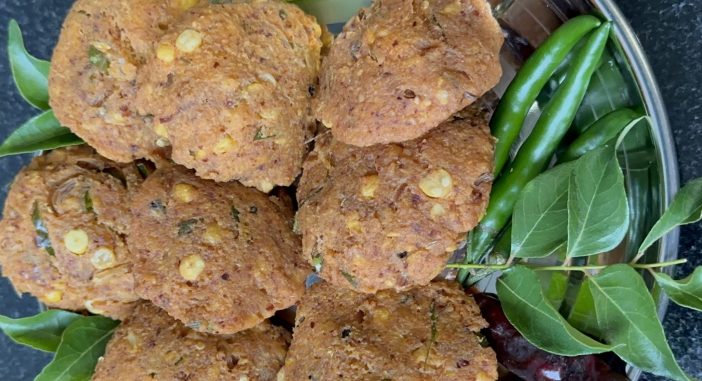
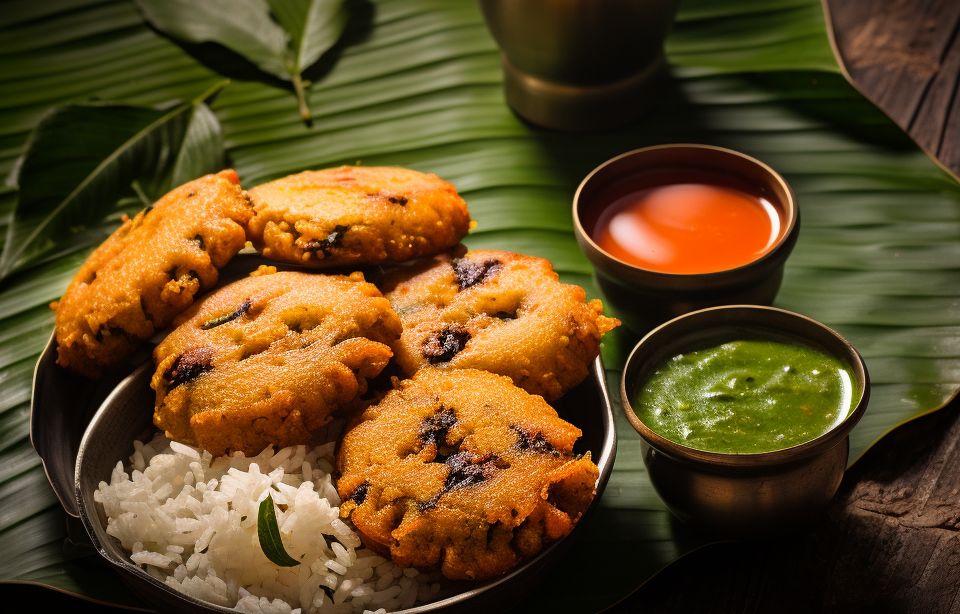

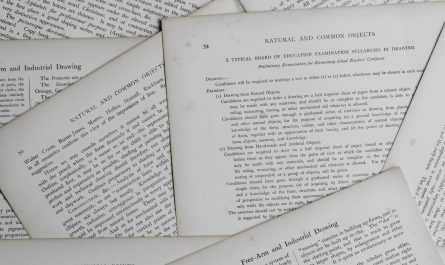

Sooo many interesting insights! Paruppu Vada looks so good to me! Will try to make some this weekend 🙂